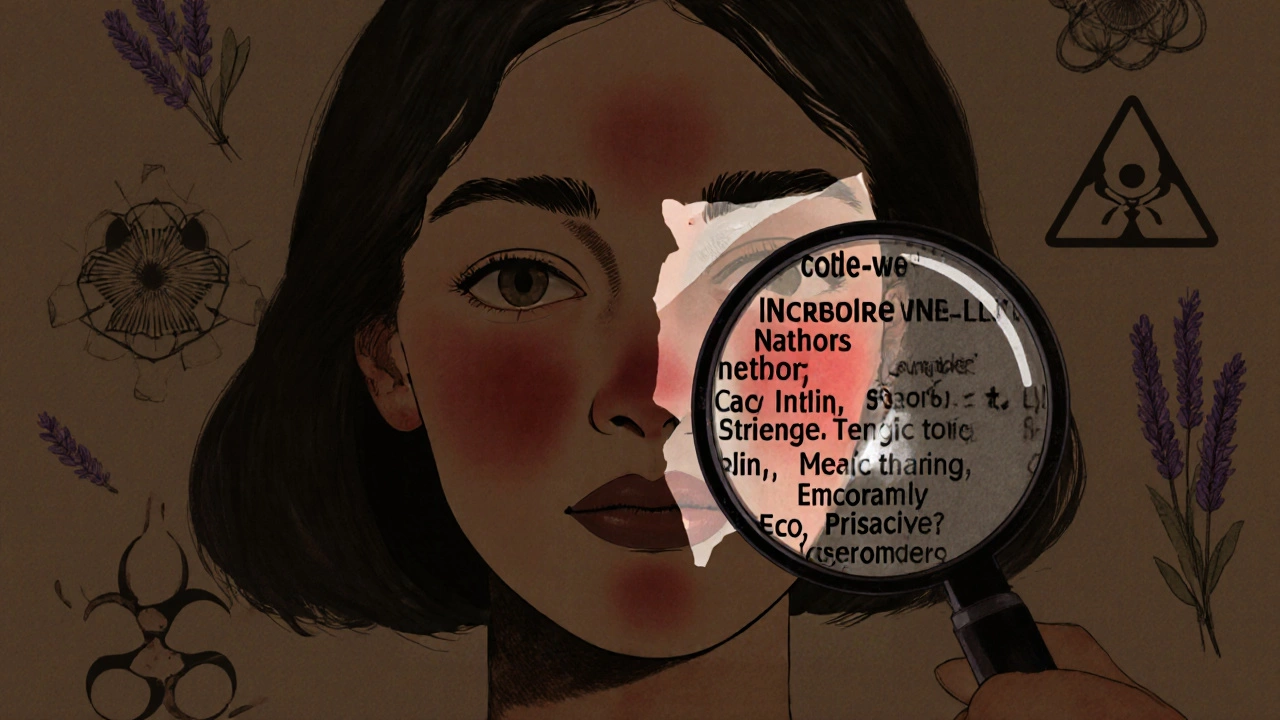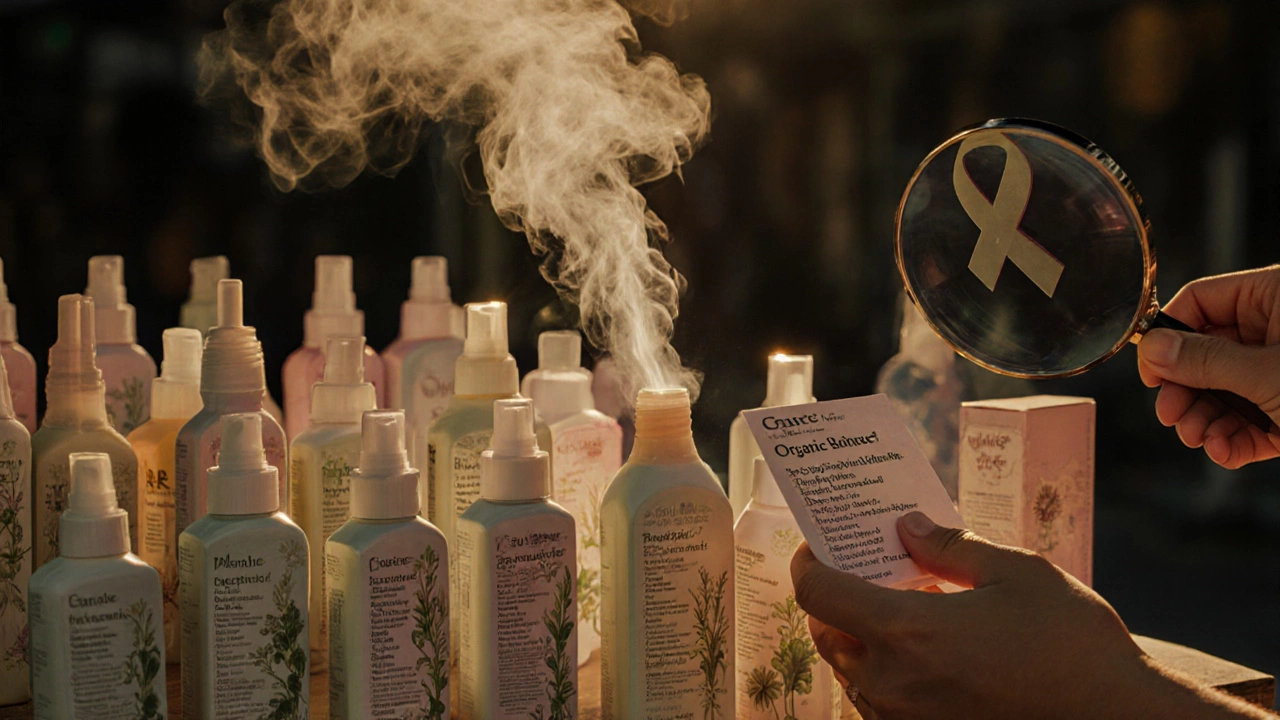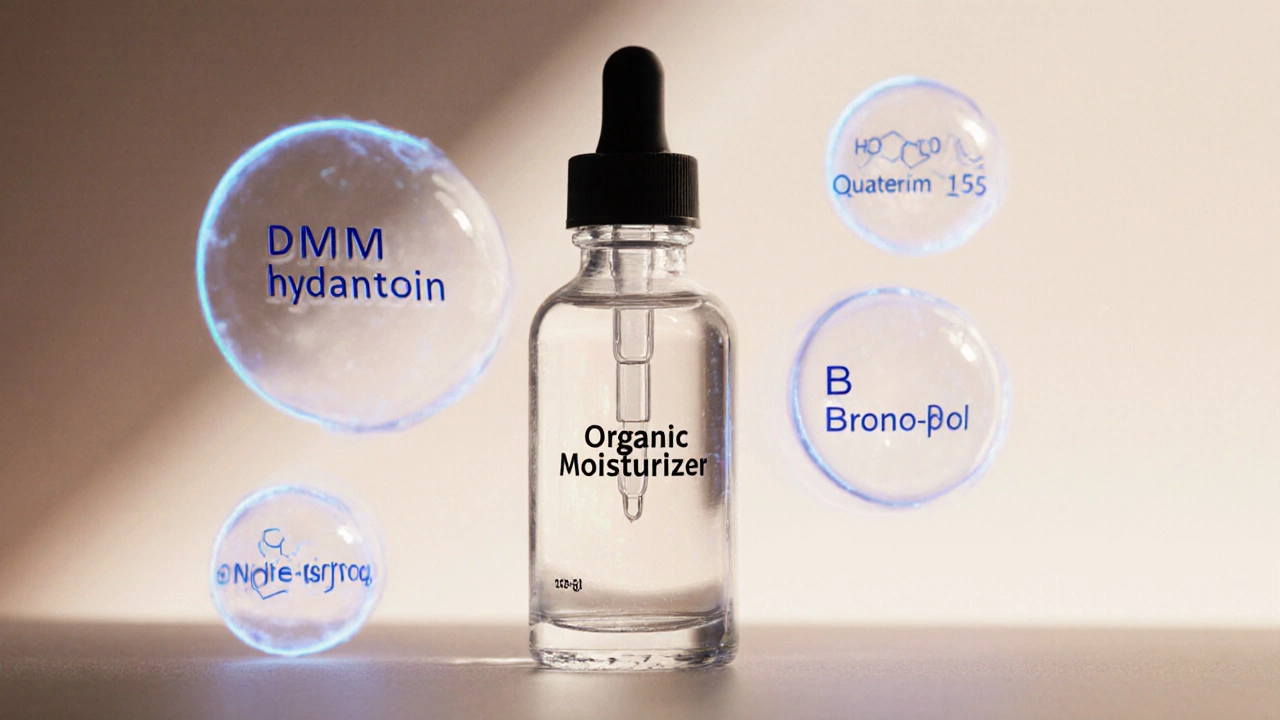Organic Skincare Preservative Checker
Check if your skincare products contain formaldehyde-releasing preservatives hidden in "organic" labels. Enter ingredient names to see if they contain these dangerous ingredients.
People buy organic skincare because they want to avoid chemicals. They assume ‘natural’ means safe. But here’s the truth: some of the most dangerous ingredients in skincare aren’t synthetic lab creations-they’re hidden in bottles labeled ‘pure,’ ‘botanical,’ or ‘eco-friendly.’ And one ingredient stands out as the most toxic product in organic skincare today: formaldehyde-releasing preservatives.
Why ‘Organic’ Doesn’t Mean Non-Toxic
The word ‘organic’ on a skincare label tells you nothing about safety. It only means some percentage of ingredients came from certified organic farms. It says nothing about preservatives, fragrances, or stabilizers. Many brands use formaldehyde-releasing preservatives because they’re cheap, effective, and legally allowed-even in products marketed as ‘natural.’These preservatives slowly break down over time and release formaldehyde, a known human carcinogen. The World Health Organization classifies it as Group 1-meaning there’s enough evidence to say it causes cancer in humans. The European Union bans it in leave-on products above 0.2%. The U.S. FDA still allows it. That’s why you’ll find it in organic serums, creams, and even baby wipes labeled ‘gentle.’
How Formaldehyde-Releasing Preservatives Hide in Plain Sight
You won’t see ‘formaldehyde’ on the ingredient list. Instead, you’ll see names like:- DMDM hydantoin
- Quaternium-15
- Imidazolidinyl urea
- 2-bromo-2-nitropropane-1,3-diol (Bronopol)
- Chloromethylisothiazolinone
These are all formaldehyde-releasing agents. They’re added to prevent mold and bacteria in water-based products. But they don’t just sit there. They react with moisture and your skin’s natural oils, slowly releasing formaldehyde over weeks or months.
One 2022 study in the Journal of Investigative Dermatology tested 47 organic skincare products labeled ‘preservative-free’ or ‘natural.’ Twenty-three of them contained formaldehyde-releasing preservatives. Five had levels above the EU safety limit. And none of them warned consumers on the label.
What Happens When It Touches Your Skin
Formaldehyde doesn’t just cause cancer with long-term exposure. Short-term effects are more common-and more immediate.People with sensitive skin, eczema, or rosacea often report burning, redness, or itching after using products with these preservatives. Dermatologists call it ‘contact dermatitis from formaldehyde releasers.’ In one clinic in Brighton, 68% of patients with chronic facial rashes tested positive for formaldehyde allergy. All of them used ‘organic’ moisturizers.
It’s not just your face. Formaldehyde can penetrate the skin, enter your bloodstream, and accumulate in organs. It’s linked to respiratory issues, hormone disruption, and even fertility problems. Pregnant women using these products unknowingly expose their developing babies to a known developmental toxin.

Why Brands Still Use It
The answer is simple: cost and shelf life.Formaldehyde-releasing preservatives cost pennies per ounce. Natural alternatives like radish root ferment or grapefruit seed extract are expensive, unstable, and less effective. They require refrigeration. They shorten product life to 3-6 months. Most brands won’t risk customers complaining about a cream going bad after four months.
They also don’t want to pay for third-party testing. A product with DMDM hydantoin can sit on a shelf for two years without growing mold. A product with a true natural preservative system might need to be reformulated every season. That’s not scalable for mass-market ‘organic’ brands.
What to Look for Instead
You don’t need to give up organic skincare. You just need to know what to avoid and what to trust.Here’s what real safety looks like:
- Look for ‘preservative-free’ products in airless pumps or opaque containers-these limit oxygen and bacteria growth
- Choose products with 100% oil-based formulas (no water = no need for preservatives)
- Check for certifications like COSMOS Natural or Ecocert-they ban formaldehyde releasers
- Trust brands that list their preservative system clearly: ‘radish root ferment,’ ‘sodium benzoate + potassium sorbate,’ or ‘ethylhexylglycerin’
- Buy small quantities and use them within 3 months
Some brands that actually avoid formaldehyde releasers: True Botanicals, Youth to the People (their cleansers), and Herbivore Botanicals. They use glass packaging, cold-process manufacturing, and non-toxic alternatives. Their prices are higher, but so is their transparency.

How to Check Your Current Products
You don’t need to throw everything out. Just check your top three products.Open the ingredient list. If you see any of these names, stop using them:
- DMDM hydantoin
- Quaternium-15
- Imidazolidinyl urea
- Bronopol
- Chloromethylisothiazolinone
Use the Environmental Working Group’s Skin Deep database. Type in the product name. If it has a score above 6 and mentions ‘formaldehyde-releasing’ in the notes, it’s not safe-even if it’s labeled ‘organic.’
The Bigger Problem: Greenwashing
The real danger isn’t just the ingredient. It’s the lie behind the label.Brands spend millions on marketing ‘clean,’ ‘natural,’ and ‘non-toxic’ while hiding formaldehyde in the fine print. They use green packaging, earth-tone fonts, and photos of lavender fields. They know you’re looking for safety. And they’re selling you the opposite.
Regulation is weak. The FDA doesn’t require pre-market approval for skincare ingredients. The FTC doesn’t enforce ‘organic’ claims unless someone files a complaint. That means the burden is on you.
Every time you buy a product with formaldehyde releasers, you’re funding a system that puts profit over health. And every time you choose a brand that discloses everything-down to the preservative-you’re voting with your wallet.
What You Can Do Today
1. Check your moisturizer. Look for the five names listed above. If one’s there, replace it. 2. Switch to oil-based serums. They don’t need preservatives. Rosehip, squalane, and jojoba oils are stable and nourishing. 3. Buy from small brands. They can’t afford to hide toxins. They rely on trust, not advertising. 4. Ask questions. Email brands. Ask: ‘Do you use formaldehyde-releasing preservatives?’ If they don’t answer, or say ‘we use natural preservatives’ without naming them, walk away.Organic skincare should be about healing your skin-not poisoning it. The most toxic product isn’t some obscure chemical from a lab. It’s the bottle you trust because it looks gentle, smells like chamomile, and costs $48. Don’t let the label fool you. Read the fine print. Your skin-and your future self-will thank you.

